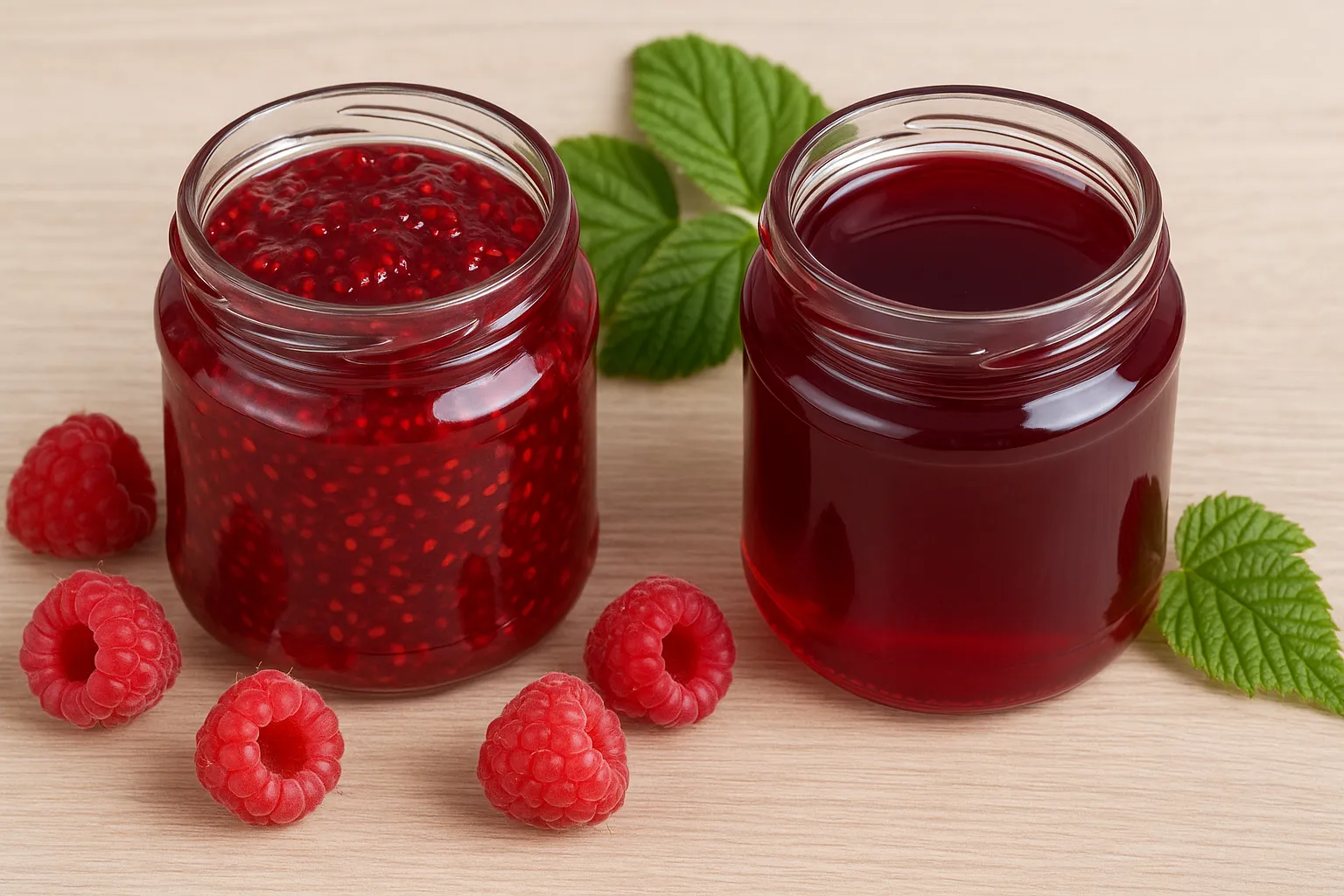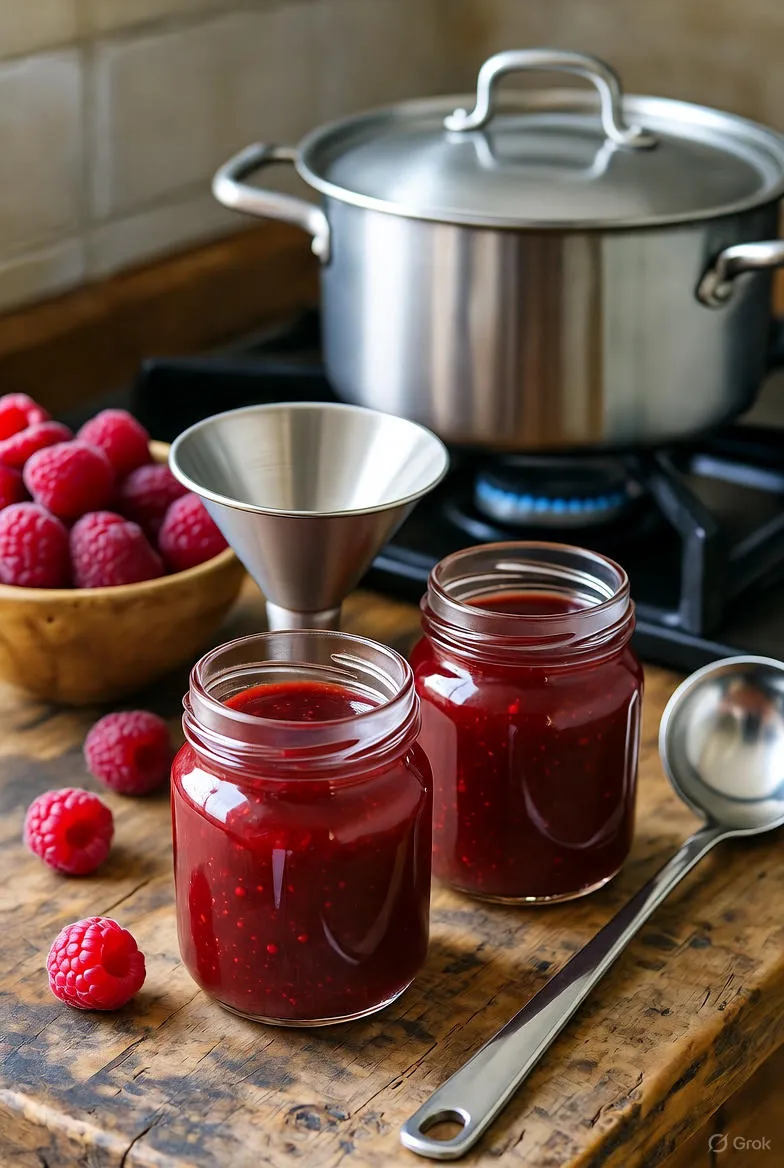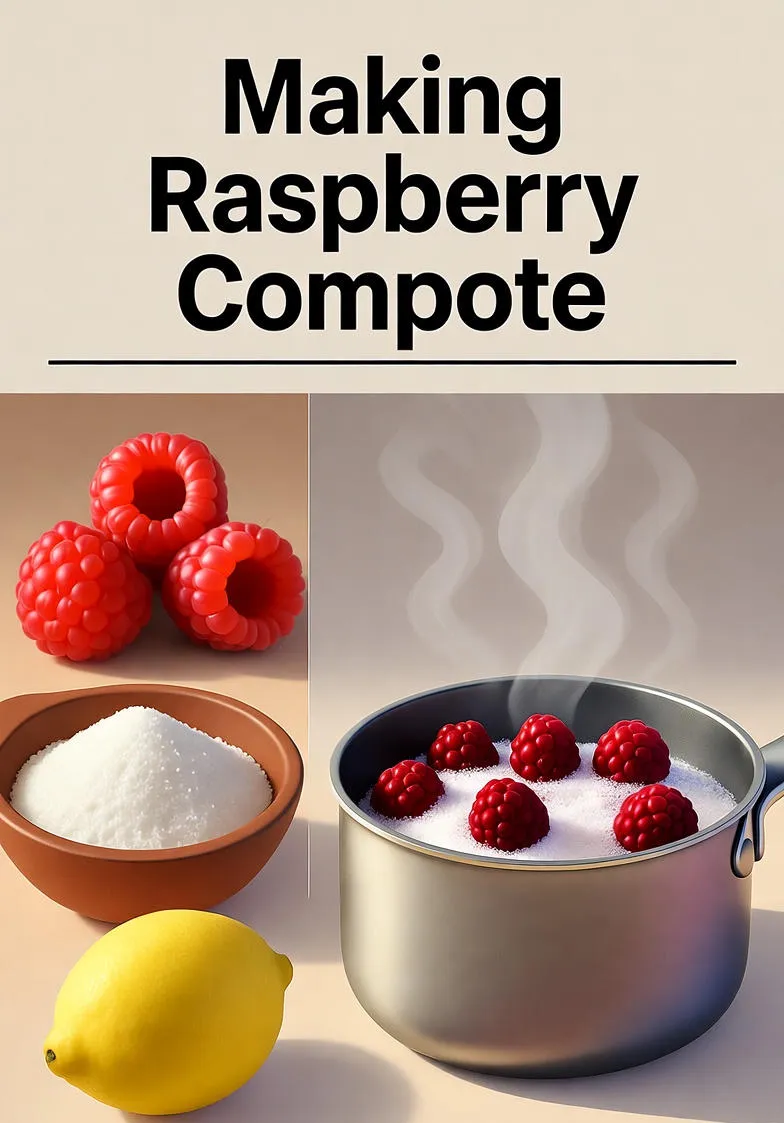Raspberry Jam vs Raspberry Jelly: What's the Real Difference?
Discover the difference between raspberry jam and raspberry jelly — from texture and flavor to preparation and best uses. Learn which is better for your recipes and why both deserve a place in your kitchen.

Raspberries are among the most beloved fruits of summer — their vibrant color, sweet-tart flavor, and versatility make them perfect for everything from desserts to preserves. Yet when it comes to choosing between raspberry jam and raspberry jelly, many people aren’t quite sure what distinguishes one from the other. While they share the same fruit base, their texture, appearance, and even taste can vary considerably. Understanding these differences can help you decide which spread best fits your culinary needs and preferences.
The Basics: What Defines Jam and Jelly?
Both jam and jelly are types of fruit preserves, meaning they are made by cooking fruit with sugar until it thickens into a spreadable consistency. However, the key difference lies in the form of the fruit used.
What Is Raspberry Jam?
Raspberry jam is made by crushing whole raspberries and cooking them with sugar (and sometimes pectin) until the mixture thickens. The result is a textured spread filled with bits of fruit and seeds. Because jam retains most of the natural pulp and juice, it delivers a robust raspberry flavor and a rustic, homemade texture. The seeds, while small, add a bit of crunch that many raspberry lovers appreciate.
What Is Raspberry Jelly?
Raspberry jelly, on the other hand, is made from fruit juice rather than the whole fruit. The berries are crushed, and the juice is strained through a fine cloth or sieve to remove seeds and pulp. This clear juice is then cooked with sugar and pectin until it sets into a smooth, translucent gel. The final product has a glossy appearance and a firm but delicate consistency that spreads evenly on bread or toast.
Texture and Consistency
The texture difference between raspberry jam and jelly is one of the most noticeable aspects. Jam offers a thick, chunky consistency that makes it ideal for baked goods like muffins, croissants, and scones. It spreads easily but retains the rustic charm of real fruit pieces. Jelly, by contrast, is silky and smooth, perfect for when you want a clean spread without any fruit bits or seeds — for instance, in peanut butter and jelly sandwiches or as a glaze for desserts.
Flavor Profile
Because raspberry jam includes the fruit pulp, it usually has a more intense and tangy flavor, highlighting both the sweet and tart notes of the berry. Raspberry jelly, being made solely from juice, tends to be sweeter and more refined, offering a purer, less complex raspberry taste. The choice between the two often comes down to personal preference — some enjoy the boldness and texture of jam, while others prefer the elegance and clarity of jelly.
Cooking and Preparation
While both jam and jelly require similar cooking techniques, jelly involves an additional step: straining the fruit to separate the juice. This makes jelly-making a bit more time-consuming but results in a polished, seed-free product. Raspberry jam can be prepared more quickly, and because it uses the entire fruit, it also tends to retain more of the berry’s nutrients and fiber.
Best Uses in the Kitchen
Each spread shines in different culinary contexts. Raspberry jam’s hearty texture makes it a fantastic filling for pastries, cookies, and tarts. It also pairs beautifully with cheeses like brie or goat cheese, adding both sweetness and a hint of acidity. On the other hand, raspberry jelly works wonderfully as a topping for toast, pancakes, and waffles or as a glaze for meats such as ham or chicken. Its smooth consistency also makes it ideal for layering in desserts like trifles or parfaits.
Pairing Ideas:
- Raspberry Jam: Great with buttery scones, cream cheese, yogurt, or as a cake filling.
- Raspberry Jelly: Perfect for PB&J sandwiches, toast, or glazing roast meats and fruit tarts.
Nutritional Comparison
In terms of nutrition, both jam and jelly contain similar calorie counts, as they are made with sugar and fruit. However, raspberry jam often retains more dietary fiber due to the inclusion of fruit pulp and seeds. Jelly, being filtered, has less fiber but sometimes slightly fewer calories per serving depending on its sugar content. Homemade versions of both can be adjusted for sweetness, allowing you to create a healthier spread with reduced sugar or natural alternatives.
Preservation and Shelf Life
When properly sealed, both raspberry jam and jelly can last for months in the pantry. Once opened, they should be refrigerated and used within a few weeks to maintain flavor and freshness. Because jelly contains less fruit matter, it often has a slightly longer shelf life than jam, but the difference is minimal when both are stored correctly.
Making Your Own: A Quick Overview
Raspberry Jam Recipe (Simplified)
- Combine 4 cups of fresh raspberries with 3 cups of sugar and 2 tablespoons of lemon juice.
- Cook over medium heat, stirring frequently, until the mixture thickens (about 15–20 minutes).
- Pour into sterilized jars and seal tightly.
Raspberry Jelly Recipe (Simplified)
- Crush 4 cups of raspberries and strain the juice through a cheesecloth overnight.
- Measure the juice and mix it with an equal amount of sugar (about 1 cup sugar per cup of juice).
- Boil until the jelly reaches the desired set point (around 220°F or 104°C).
- Pour into sterilized jars and seal while hot.
Which One Should You Choose?
The decision between raspberry jam and raspberry jelly ultimately depends on what you value most — texture, flavor, or clarity. If you enjoy a bold, fruit-forward experience with bits of real berries, raspberry jam is your best bet. It feels homemade, rich, and satisfying. But if you prefer a smooth, refined spread that looks elegant and spreads cleanly, raspberry jelly is the perfect choice. Many enthusiasts keep both on hand, using each for different purposes throughout the week.
Final Thoughts
Whether you choose jam or jelly, both celebrate the essence of raspberries in their own way. From breakfast toast to sophisticated desserts, these preserves bring a burst of flavor and color to every dish. The next time you find yourself at a farmer’s market or in your kitchen with fresh raspberries, consider making both and enjoying the best of both worlds — the rustic richness of jam and the silky smoothness of jelly.
Key Takeaway
Raspberry jam and raspberry jelly may share a common fruit, but they deliver distinct sensory experiences. Jam offers texture and boldness, while jelly provides elegance and clarity. Together, they highlight the incredible versatility of raspberries — one of nature’s sweetest treasures.


